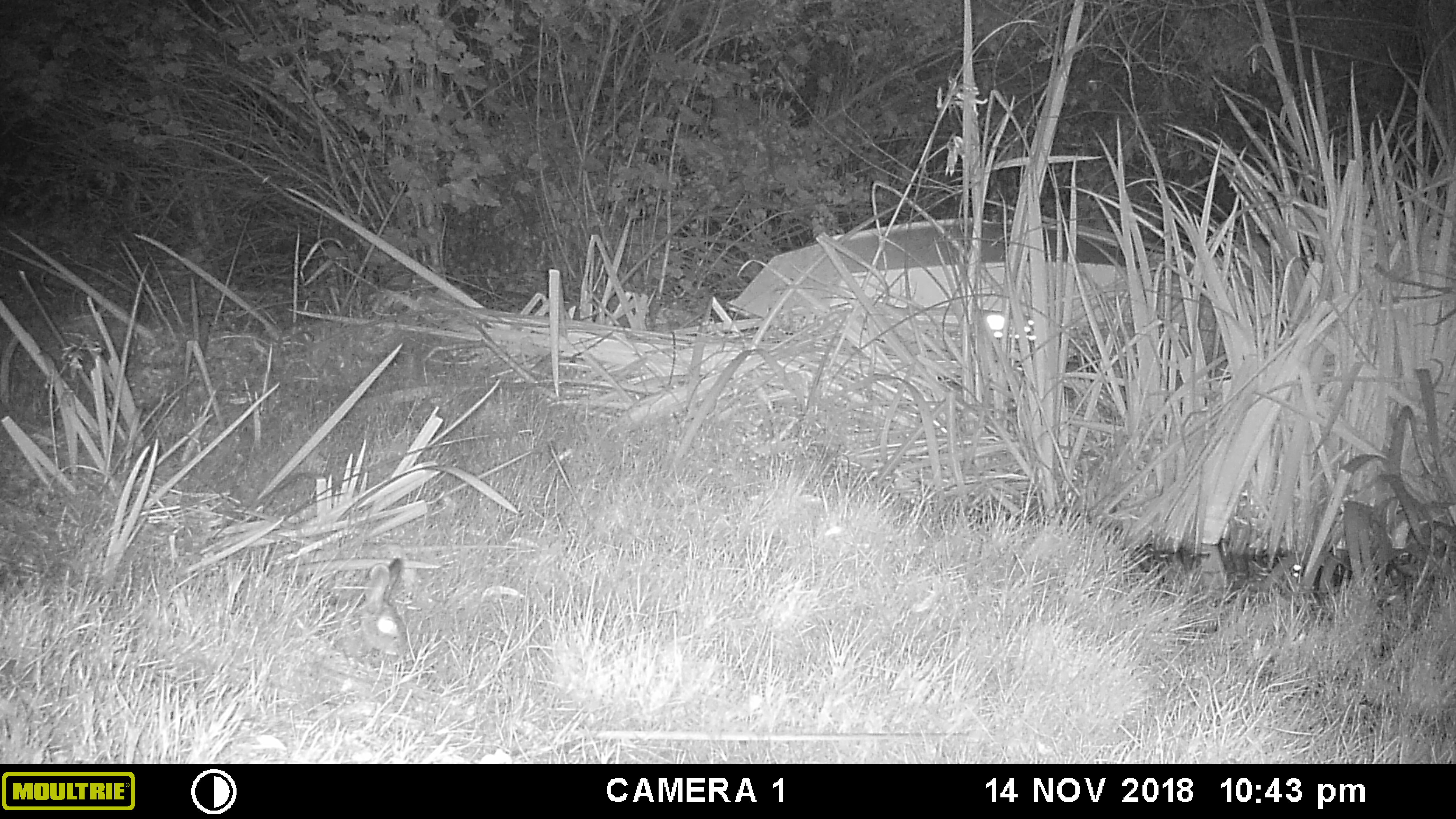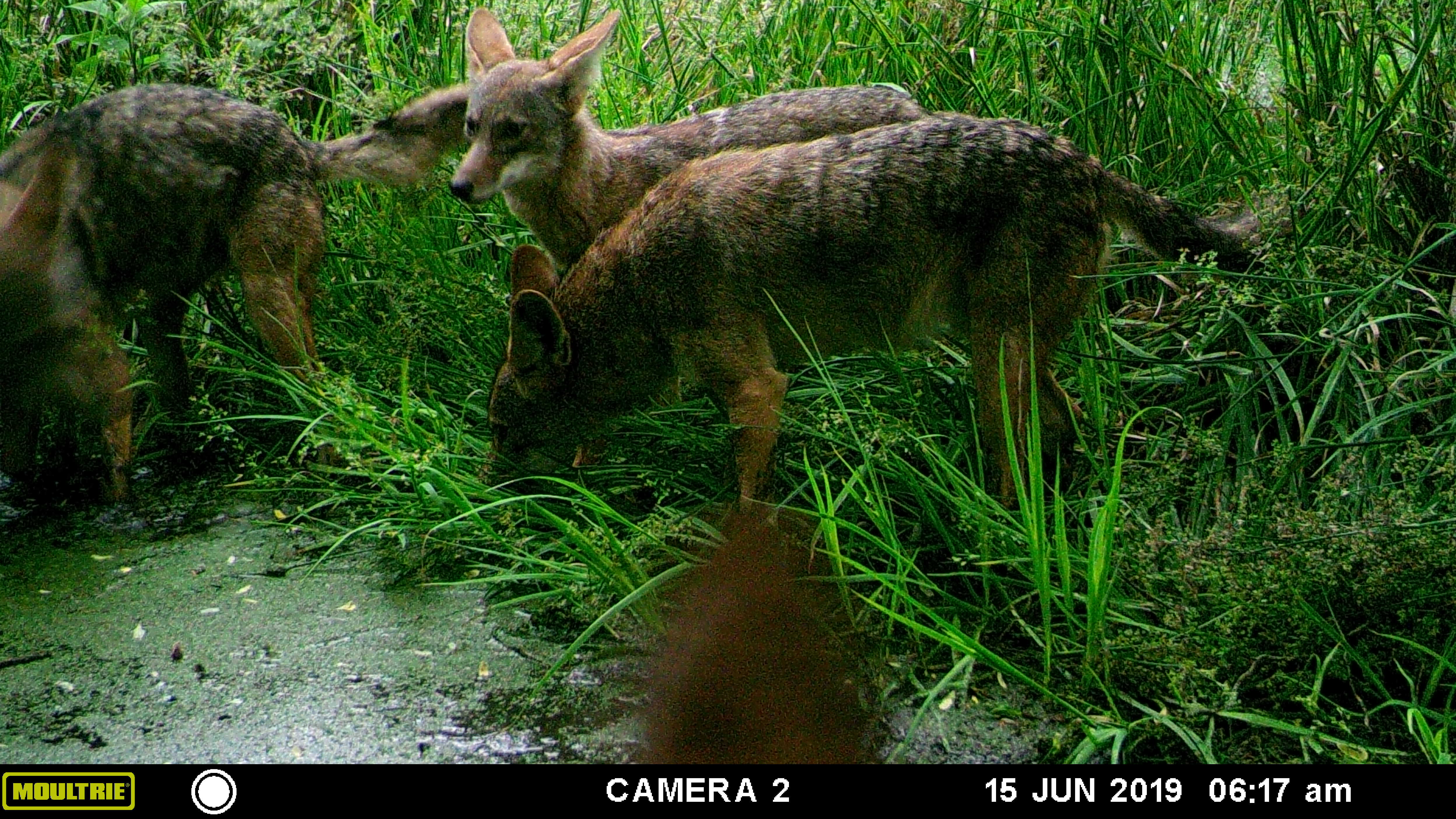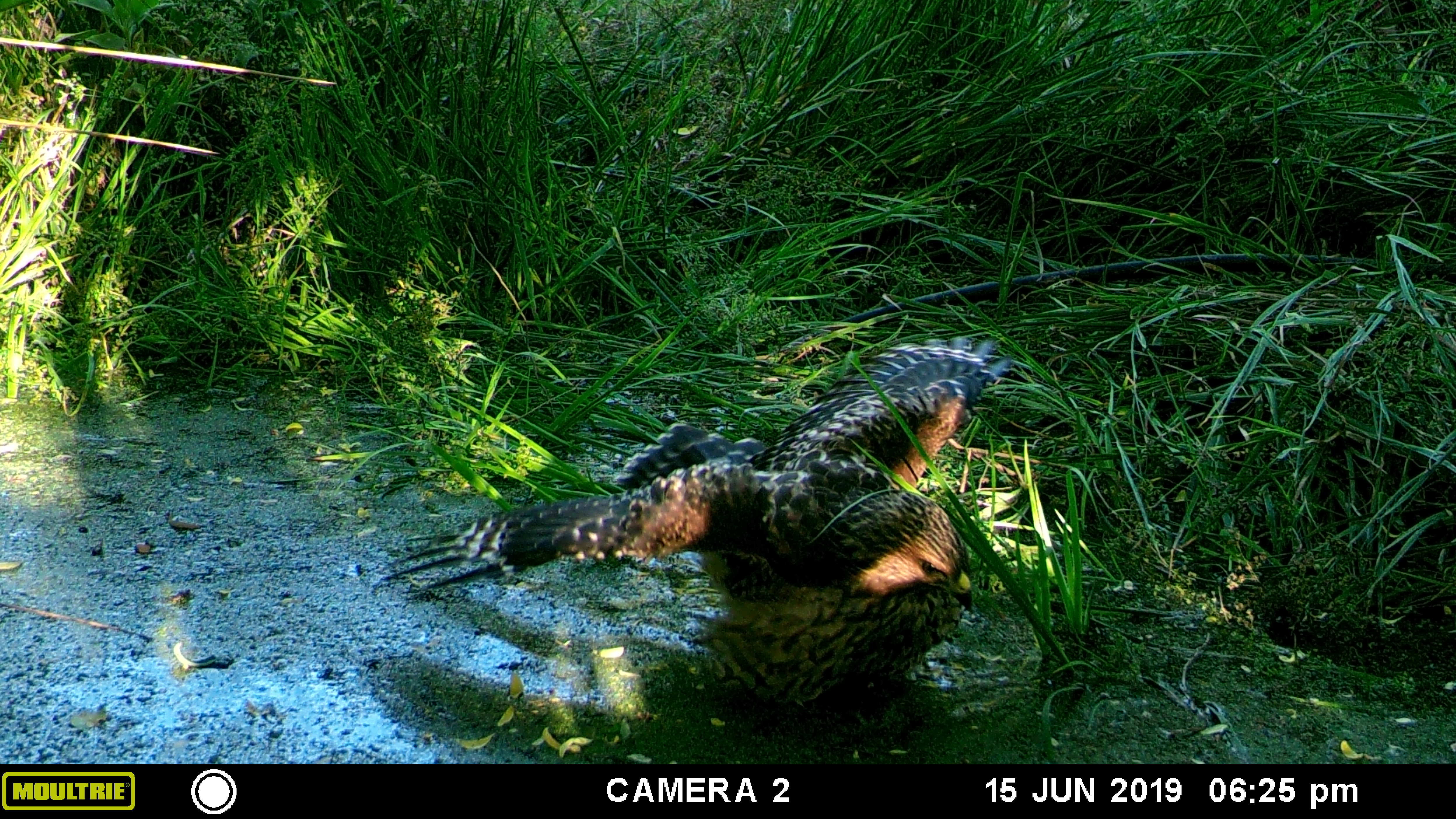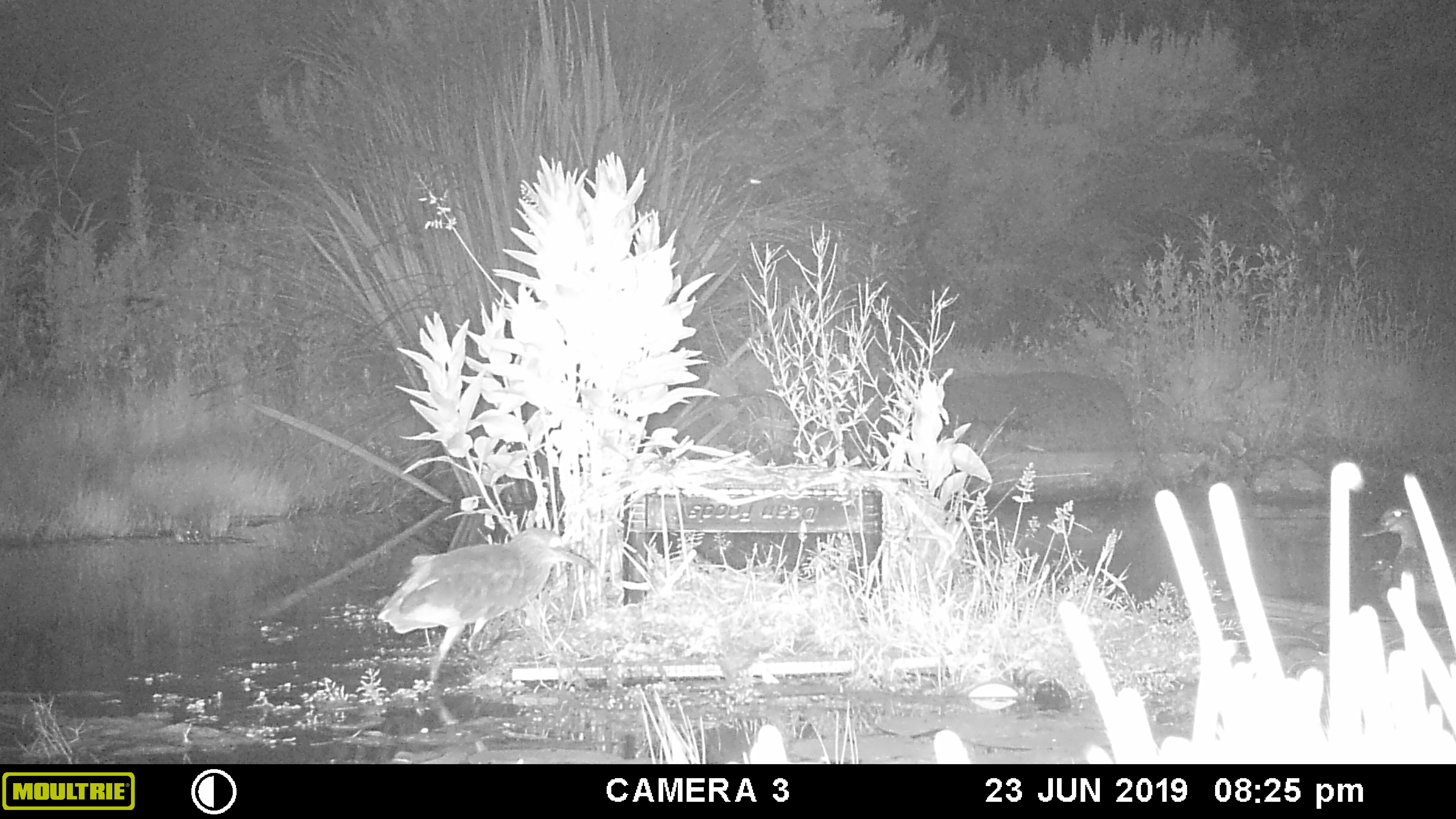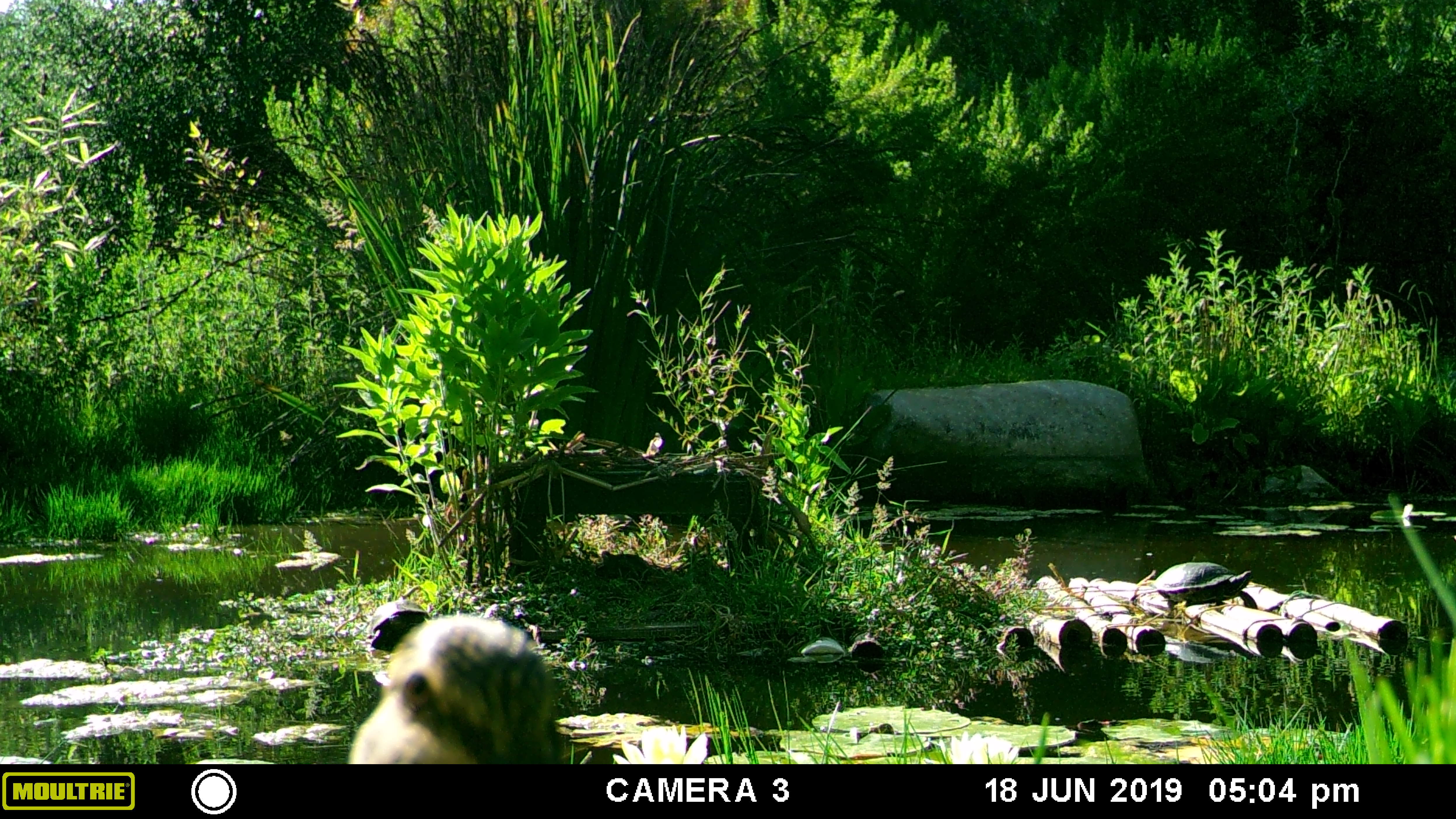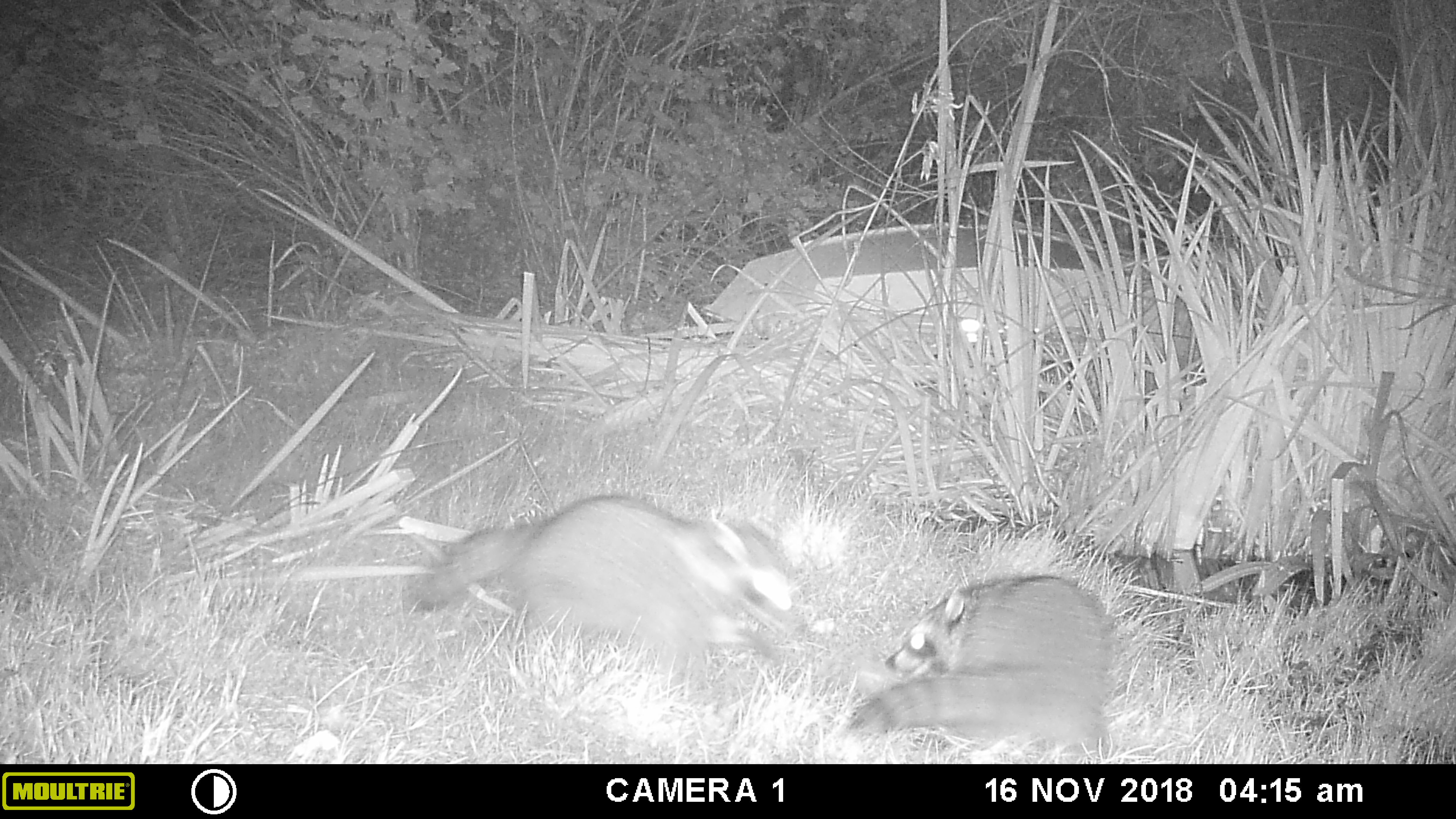-
Happy New Year
This year has been a long series of kicks to the teeth. So I was thinking, what could be a better way to close it out than like a Jackie Chan action movie from the ’90s? — with a blooper reel.
All year, we’ve had wonderful sightings, fascinating behaviors, and amazing interactions play out on the wildlife cameras. Not all of these have evoked the majestic spirit of nature. Sometimes, we just be livin’, amiright?
Please enjoy — and have a very caring, safe, and happy 2021.
So helpful. 

Not her best angle…. It’s hard to be a momma poss with a pouch full of little posses! “Darling, I don’t think my caterpillar collection is as safe in that bag as we thought it would be….” 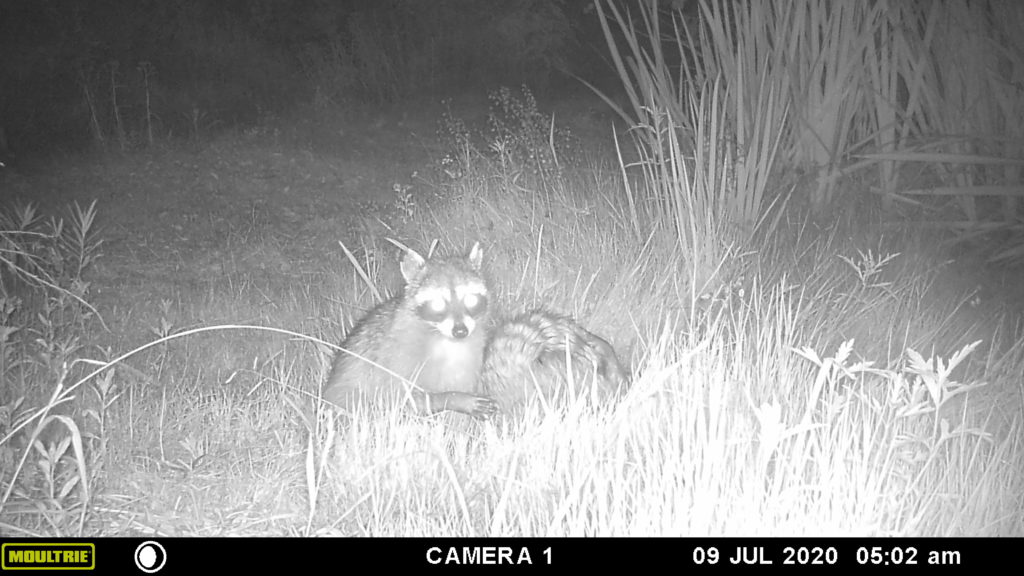
“Yeah, I didn’t think it was a good time to play, either….” -
All the leaves are brown — and the foxes are grey
Through the fall so far, the wildlife cameras have continued to offer an enchanting insight into the usually unscrutinized, quiet shiftings of our habitat.
We’re obviously looking for animal activity on the cameras, but sometimes late or wind-blown-plant triggers capture some beautiful moments from the little ecosystems the cameras overlook.Daily, nightly, a lot of the same animals appear over and over, filling up the SD cards with hundreds of iterations of the same pieces, in snapshots or 15-second installments, of the same stories. This can be challenging to process, but we love the way we’ve come to know the patterns of some of our wildlife’s lives, and even know individuals.

This is the pond bunny. Pond Bunny hangs out in the bottom left corner there, popping in and out of the mule-fat, in and out of the screen. Pond Bunny helped me with rebuilding the little bridge by the withy hide. We love this opportunity to learn about and appreciate each little story: the summer evenings where spidery crane flies fill the creek’s small barranca well with their dramatic bumbling — skittering, over-exposed, in the capture of the infrared lights;
the black phoebe caught, again and again, in Muybridge frozen energy, in aerial sallies on winged insects attracted to the big pond in the afternoon warmth;

the long, still moments as an animal just stands, and looks, pulls in the air and lets its carried scents and noises sink in.
And, of course, we do still covet the unusual — even, playfully, the impossible: as any kid knows, dreaming (im)possibilities is half the fun of any endeavor (“Iron-flanked and bellowing he-hippos clanked and battered through the scudding snow towards us as we passed Mr. Daniel’s house.”). What could come here? I want rare birds to thoughtfully pose, in focus, on the cameras — and also to see a weasel. Maybe lots of weasels. And a scissor-tailed flycatcher would be great. Mom wants hedgehogs and foxes. Reasonable, right?
Well, turns out the foxes are pretty reasonable!
Who knows whether foxes have come through the property before. Who knows if one ever will again — or if it will pass through in a place and fashion that allows our cameras to record it. Tantalizing and wonderful!
(And my weasel dream looks brighter than ever!)
______________________________________________________________________________
Quotation from A Child’s Christmas in Wales by Dylan Thomas -
Owl in Good Time
Delightfully, the streambed wildlife camera has also been picking up an adorable owl visitor these last couple of months. Western Screech Owls (Megascops kennicottii) are certainly present in the area, but much less common to see than Barns and Great Horneds — they’re more reclusive than those much larger species, hunting mostly different prey and small enough to be at risk from larger raptors themselves. The ones on our property have made themselves known by the distinctive “po-po”, ping-pong-ball-bouncing call that only ever rises up from the tangle of trees in the streambed. We’ve only seen one in person on the property once, when a tour stop under the Big Oak above the stream woke it from its chance nap inside the disheveled old owl box dangling from a branch.
But we seem to have at least one — apparently very dirty — screech owl hanging around this summer, taking baths at the camera point at least a couple times a week. And it’s just the cutest darn thing.
“I meant to do that.” A very imperfect ablutioner. Here in lower elevation areas of Southern California, screeches stick near waterways because those habitats are where we have large trees; as cavity nesters that have adapted to have cryptic coloration and patterning that allows them to blend in with bark, large trees are essential. Happily, we have some big trees extant and growing in our little slot of land. And we have a number of conservation organizations locally who are working to preserve wild land and especially land connected to waterways, as these are always areas of higher species density and diversity. And they say that Western Screech Owls readily use owl boxes made to their dimensions. Wish list!
Bath interrupted by a sphinx moth. Crane flies also make cameos. -
Kit for Kat
Lots has been happening on the wildlife cameras recently. We still have camera 1 in its original spot, overlooking the north bog on the big pond, but we’ve been playing around with the positioning of camera 3 in the streambed and shifted camera 2 to the top of the stairs that lead under the Big Oak and down to the streambed where camera 3 is. Let me tell you, this has been a very rewarding set of adjustments!
We have to start our series of catch-ups, though, with the charismatic megafauna, and our most unusual visitors. They’re not regionally unusual; it’s simply our more urban, road-locked setting that makes them unusual on-site. Luckily, the little unnamed seasonal waterway that links numerous properties in a little strip transecting East Alvarado seems to be a relatively unrestricted roadway for many species. Healthy, natural waterways are important in so many ways!
Back in March, we shared our first ever sighting of a bobcat on our property with you. Well, we were absolutely staggered and thrilled when we pulled these videos off the cams recently:Surprise! Looking back at our first bobcat sighting video, it’s actually pretty obvious that cat was carrying a little extra weight — wonder where she denned! Bizarre reflection effect in this video that hasn’t happened in any other video. Ghostcat! (Steals mah hawt.) If those didn’t play for you, do visit our YouTube channel to check them out!
We’re very excited by the cutie kitties, although we’re taking extra care with the door of the Fowl Fortress!
-
Aphid Predators II
A WALK ON THE TINY SIDE

Remember this image of a sneaky syrphid fly larvae? Well, what I didn’t point out before was that there’s an even sneakier attendee at this aphid-nomming party. And she’s that little black line across the white leaf vein in the top middle of the photo: a parasitoid wasp.
Parasitoid wasps are pretty full-on — their simple life functions can include grotesqueries you thought only originated in the imaginations of sci-fi script writers. But they’re part of the complex web of ecological checks and balances in their systems.
The difference between parasitic and parasitoid is that a parasitic animal generally doesn’t kill or even directly seriously harm the host; it needs the host to continue functioning so that it can support the parasite. A parasitoid uses the host up in the process of supporting its own growth and/or reproduction.
That sneaky parasitoid lady and her cohort are the authors of the scene of destruction above. What look like little brown bumps on my Brussels sprouts leaf are in fact the corpses of aphids: the dried, hardened exoskeletons of used-up hosts. You can even see a small, round hole in the top of one — the door the exiting parasitoid punched out and left open behind it.
Parasitoid wasps like this one home in on the distinct chemicals released by the feeding and typical drama (like terror over a syrphid fly larva attack) of an aphid colony. Fertilized females settle on leaves and begin their prowl.
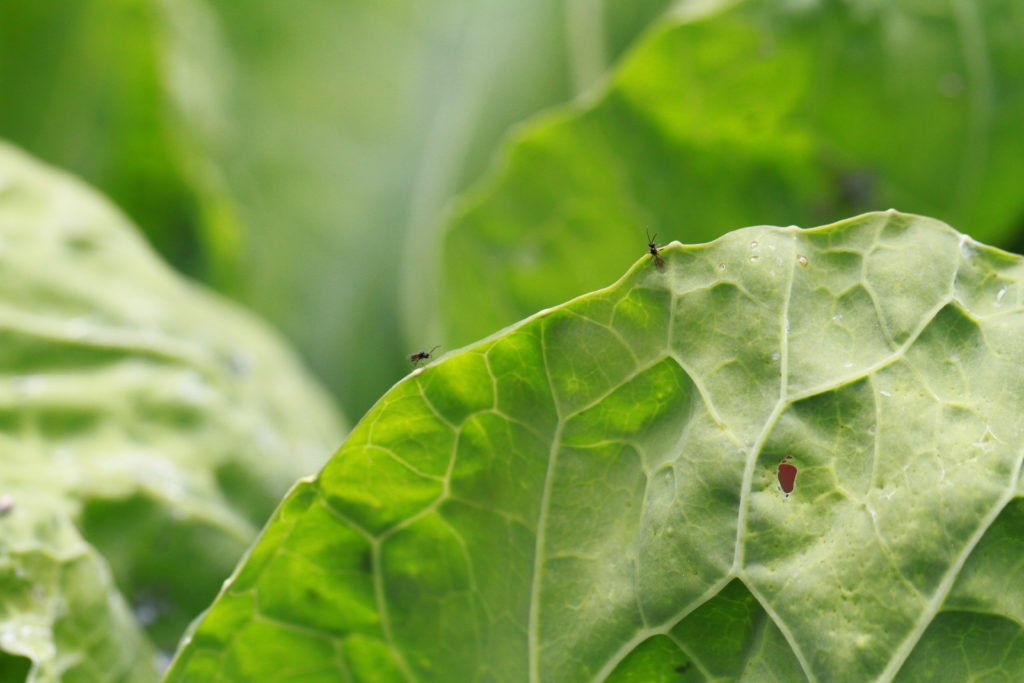
They’re looking for nice, juicy aphids that will be able to feed their grubs to adulthood. With a quick stab of her ovipositor, a female wasp injects a single egg into a chosen aphid, then prowls on. Once that tiny egg hatches, however, the aphid will slowly be hollowed out from the inside by the hungry, growing grub, until only a husk is left and the mature wasp breaks its way out, exercising its brand-new wings in flight for the first time.
The world is made up of opportunities being taken: everything is a resource and every resource is a chance for an existence to bloom. Sometimes, that existence is just really horrific. But it works for them and it works to create a functioning ecosystem — dynamic equilibrium — so we can all actually be very grateful for the parasitoid wasps.
Creeped out, but grateful. -
Aphid Predators
A WALK ON THE TINY SIDE
Another blooming colony of cabbage aphids (Brevicoryne brassicae) on my brave Brussels sprouts: a familiar sight, especially as the weather warms.
But wait — what’s that?
That! The green thing!

It may look a lot like a cabbage white butterfly (Pieris rapae) caterpillar, but it’s definitely not. Take a closer look and you’ll see that rather than a mouthful of sprout leaf, this little green guy is munching on aphid.
One of the most numerous, in terms of species, groups of animals on Earth are the flies, order Diptera. Like any large family, there are some gems, some bad apples, some neutrals — and of course, all that depends on your point of view. To aphids, larvae of some Syrphid flies (family Syrphidae) are stone cold bad-‘uns.
Also known as ‘flower flies’ and ‘hover flies’, these natty little fellows pull a lot of weight (each species in its own way) in both natural and altered ecosystems. Their secret is in their adaptable nature: they’re able to take to human-made environments, so are often some of the only native wildlife in housing developments.

The tellingly-named four–spotted aphid fly, Dioprosopa clavata. Most species in North America as adults mimic bees with yellow, black and striped uniforms and certainly rival and even surpass native bees in pollination services (bees are generally more sensitive in many ways and so are more often excluded or eliminated from habitats). They eat nectar and pollen, as bees do, thus the common name ‘flower fly’.

Flies’ eyes are very distinctive and always give away dipterid mimics passing as other insects — you can’t hide those flyin’ eyes, Copestylum avidum! And of course, most syrphid fly larvae are voracious predators of aphids, making them powerful elements of any garden’s pest management system (a.k.a. ecosystem). Be sure to make friends with yours! Get in touch with Pest Control Cincinnati

-
This Article is a Stubbin
We took a rare day completely off work last Thursday and had a rainy day in. I say “off work” — we did get some tasks done, but they’re fun tasks that get pushed back by more serious jobs. Seed shopping (!!!) and checking our wildlife camera SD cards.

Hey — who’s in those peas?! Oh, it’s me. The wildlife camera on the wild streambed at the bottom of the property is set to take 15 second videos. Going through these can be a bit of a chore — maybe several hundred to over a thousand a month, and so many are just waving leaves or half a second of raccoon tail going out of shot at the start and fourteen and a half seconds of mud and leaves. Or rats. Lots of thirsty rats.
[Edited down from 15 seconds for your viewing convenience.]
https://youtu.be/MW6rp6LP1KQThe site the camera’s positioned at is an intersection with a runoff vein from another property, so it’s a real bird hotspot, and the streambed acts as a road for larger mammals. Wading through the dreck can really pay off — that’s why we have the camera down there still.
Imagine our startled shrieks of delight when we clicked off another “wind” video and encountered this big, stubby payoff:
It’s not every day you get to add another mammal to your property species list! Come eat our rats, Mr/Ms Bobcat!
-
The Coon Saga: The Luck of the Draw
 POND FROLICS
POND FROLICS
Long before the ponds were put in, the property was still home to a gregarious population of raccoons, due to the small seasonal stream that cuts the western end of our land. Most particularly, a mother coon would always set up stakes in our area and rear her brood to wash their scavenged tidbits in our birdbath and roll our firewood across the porch in search of mice.

Baby coons are a lot of trouble. Mama always has a lot on her scary, leathery little hands. Usually two to three kits at a time, brimming with her own casual greed and entitled curiosity but without — yet — her seasoned edge of belligerent caution, they tumble and squabble, wander and sneak and thieve their way through summer’s kithood until they disperse to independent mischiefs and leave their mother with a brief respite before she’s thrust back into the whole ordeal again (and that’s another story right there…).

KIT: I wonder where Mama is…
MAMA, to camera: Srsly. I said “Stay on the fence,” and this is what they do to me. These kids, you know? BTW, I will bite your face off of your skull if you come any closer.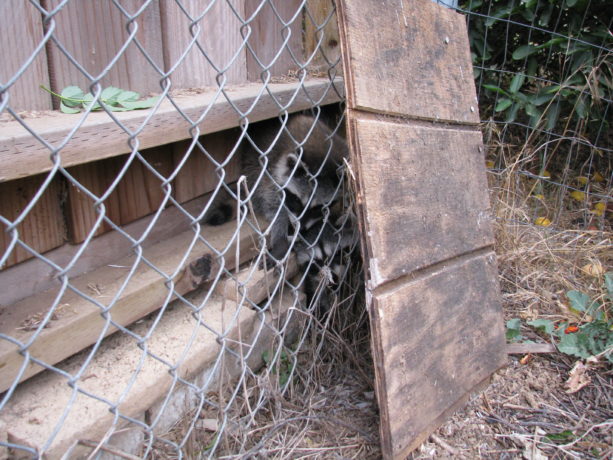
(This chain link is directly below the kit on the wood fence in the previous picture.) This year, the local mama coon has been blessed with quadruplets.

Notice Mama top right. Needless to say, the cameras have been providing plenty of schadenfreude over the last few months.

Oh look, a moment by herself to have a nice little hunt for her own supper. Feels like there’s something there…. 
Oooo! Get inta this…. 
…and baby wants some! 
Oh well. -
The Battle of the Bulge
 POND FROLICS
POND FROLICS

In the still of the night….
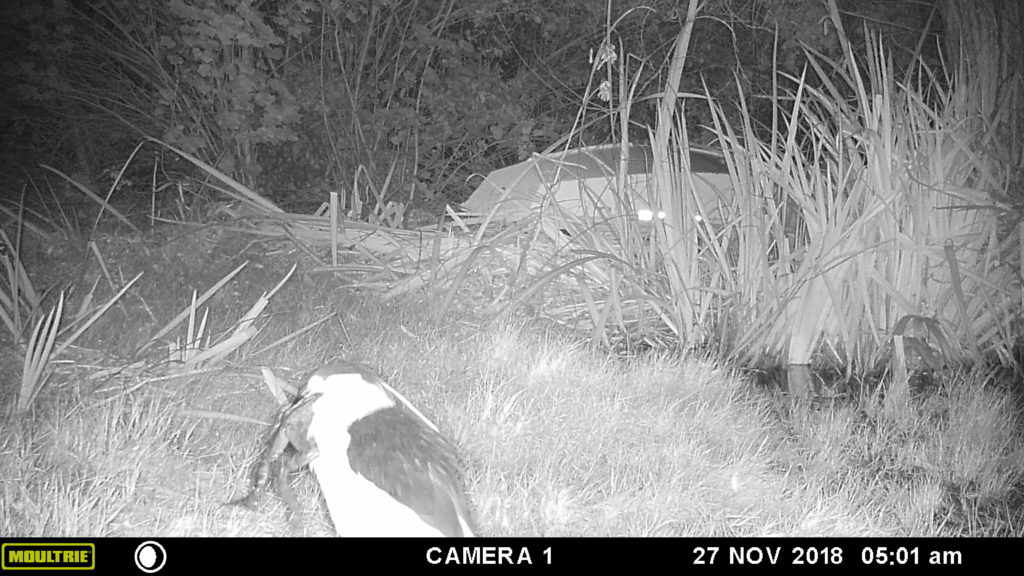
“AHAAAAAH! ‘INGO! Om wi’ EE, ithter ‘ummy!” 
“…Iddle ard oo ‘thallow…” 
“Utht ‘otta adust.” 
“Abee oer ere….” [Five minutes later…]

“Oou know, imma juuuust –“ 

“You know, I really feel like worms, anyway. Yeah. Alright. Let’s go get some worms! Yeah.” -
Owl Be There
 POND FROLICS
POND FROLICS
That nocturnal birds eat at night is a pretty straightforward piece of knowledge — awake at night, ergo eating at night.

It’s also pretty clear to anyone who finds a large dropping on their car in the morning that wasn’t there the evening before that other functions of life have to happen in the hours in which we sleep or stumble into things as well.

It’s funny how surprising it was to me to be confronted with the fact that owls — as of course they must do — also bathe at night.



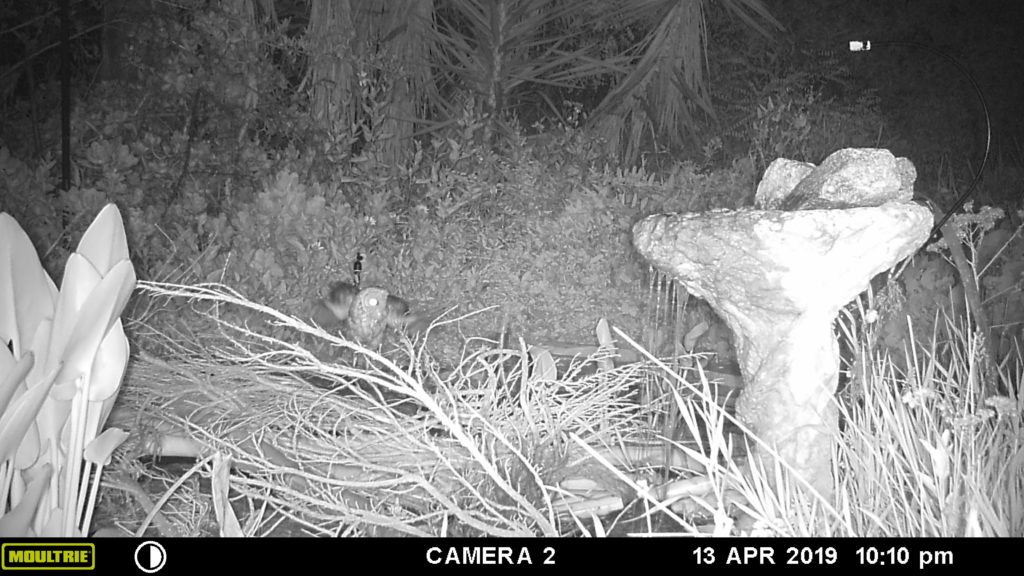
Need to install an owl-dryer out there!


